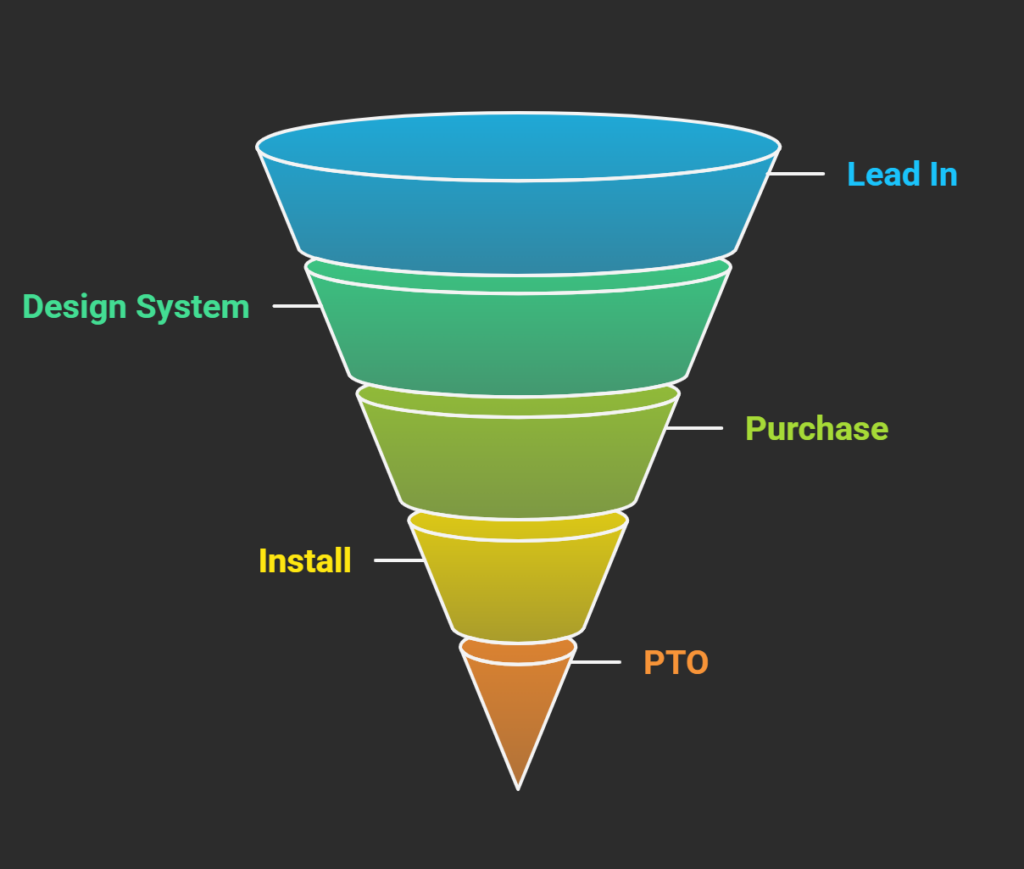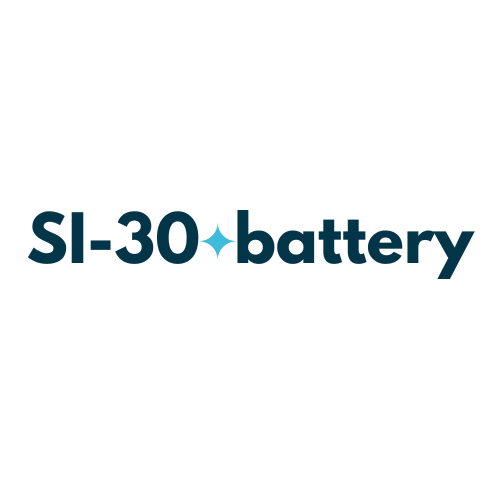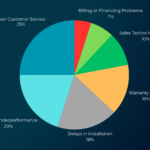In the competitive landscape of residential solar, continually attracting new opportunities and customers is paramount to a solar installer’s success. However, customer acquisition can be complex. Generating new leads requires a dedicated marketing department, paid advertisements, subscriptions to lead-generation sites, direct mailers, or, in some cases, door-knocking.
While important, all of those efforts can reduce profitability. But there’s a way to boost your pipeline and profitability simultaneously: re-engaging your existing customer base.
Table of Contents
The Solar Customer Lifecycle

Solar customers are all too often one-and-done interactions. They come through the typical lead funnel, work with a sales consultant to design and purchase a system, are installed, and only interact with the company again for maintenance and repairs. Once a system is installed, it is on to the next prospect, customer, and installation, leaving little to no room to kick current customers back into a sales funnel. The trouble is that studies suggest that acquiring a new customer can cost five to seven times more than retaining an existing one.
To lower acquisition costs and boost profitability, solar providers should look at their current customers for ways to check in and re-engage with potential additions like storage, panel add-ons, critter guards, or EV chargers. This will offer your business a chance for revenue and likely lead to a shorter customer cycle and higher close rate. A brief check-in will also bolster a company’s reputation by continually serving those homeowners who have already chosen to work with them.
Outside of reputation, regular check-ins with customers provide the opportunity to ask for reviews when customers are happy and have positive experiences. Customers with a more complete lifecycle relationship with their solar installer are more likely to participate in interviews and case studies, give quotes for marketing materials, and refer other clients to the business.
95% of consumers turn to online reviews when making purchasing decisions so the value of maintaining a relationship is of the utmost importance.
What Can Be Offered

While the scope of an installer’s offering can be vast, two main components should be reviewed and offered to existing customers: additional panels and battery storage.
One of the most misunderstood parts of solar system design is that the production estimate made by the original system designer and the energy offset it produces are just that, estimates.
Solar designers can plan for additional power needs to a certain extent, but factors outside a homeowner’s control could affect their solar production. For example, tree growth. If a home has trees that are beginning to reach over the panels and the shade is causing a drop in production, evaluating that and pointing it out to a homeowner helps your credibility.
A more difficult issue to address with homeowners is the solar rebound effect. Anyone who has worked in residential solar has likely experienced it, but research from the Electricity Journal at Science Direct puts a real name and numbers to it.
The “rebound effect” has been studied in the past concerning energy efficiency upgrades but recently has made its way into the solar PV discussion. Essentially, the solar rebound effect is a phenomenon where adopters of solar PV tend to increase their energy consumption after installing solar. The Electricity Journal’s research suggests a 10%-30% increase in energy consumption after adopting solar.
For solar homeowners, understanding and accepting this can be a tough pill to swallow. Most homeowners think that when they install solar panels, they just get rid of their electric bill for the next 20+ years, but are unaware that they could be using more power because in their mind, they have free energy.
Setting proper expectations on the front end of a solar installation is key and will be a topic for another article, but solar providers can also use the rebound effect to their advantage.
Solar reps should ensure their customers know about the rebound effect on the front of the installation, then regularly check in with customers after installation to help evaluate energy use.
Calling out energy consumption increases helps build a solid reputation and opens an opportunity to add panels to that customer’s home.
Battery Additions
A Berkeley Lab study found that 20% of battery installations are retrofits—meaning homeowners who invested in solar years ago now realize they need storage, too. But retrofits bring up new homeowner questions like:
- “Will my existing solar system work with a battery?”
- “What if my inverter isn’t compatible?”
- “Are there hidden costs?”
- “And if something goes wrong, who pays for it?”
These are real concerns. Because while homeowners want energy independence, what they really want is certainty—that their system will work, that they won’t be blindsided by unexpected costs, and that if something fails, they’re protected.
Battery retrofits are becoming more and more popular due largely to:
- Grid Outages
As severe weather patterns become more common around the country, battery storage is a valuable addition to any home. Sometimes, homeowners even opt for battery storage over generators for a longer-term backup solution.
- Grid Policy and NEM Changes
With more and more utilities across the country moving away from NEM 1.0, or retail rate net metering, the value calculation of solar without storage decreases. We’re seeing battery attachment rates increasing to nearly 25% and even more batteries deploying in retrofit capacity. While many utilities offer programs to grandfather in existing systems with earlier NEM policies, those utilities set rules about when someone would need to move to a new NEM agreement. For example, if they add panels to the system and increase the AC size of the system.
Along with changes to NEM policies, utilities across the country are also moving toward time-of-use or real-time pricing models.
With a real-time pricing model, grid prices fluctuate throughout the day depending on the demand on the grid at that time. Power purchased during the day can be significantly more expensive than at night. Of course, the issue facing many homeowners is that the rates are the highest when they need power the most.
As more utilities adopt this policy, adding battery storage becomes a more attractive addition. According to a SEIA Consumer Trends Survey, 72% of homeowners say they want more control over their energy use. They don’t want to feel powerless when prices rise or when the grid fails. They want the confidence that their home can run—whether or not the utility company delivers.
Homeowners can charge their battery with energy above their home’s consumption and then discharge that power into their home to meet demand during high electric rates. This term, called Rate Arbitrage, has the potential to save homeowners significant amounts of money.
Overall, battery storage has a value proposition that grows by the day. Solar providers can re-engage with their already happy existing customers experiencing the abovementioned issues and looking for a solution. A customer who already knows your company’s quality and value costs you nothing to acquire and increases profitability for the business.
The Cherry On Top



Being able to re-engage customers facing unique challenges and offer them valuable solutions has enormous potential to positively impact a business’s bottom line. However, the true cherry on top of the value of an ice cream sundae is the one certified providers can give their customers, SI-30.
It’s one thing to offer customers a solution to their problem, but giving them true peace of mind that their additional investment comes with 30 years of protection against failures and labor costs gives them even more confidence.
SI-30 Solar, SI-30 Total, and SI-30 Battery all give Solar Insure Certified Providers the ability to boost profitability by turning their service centers into profit centers. More installs mean more service work eventually, so get paid for the work you’d already be doing instead of eating the cost or putting it on the customer.
Check out our SI-30 Products: https://www.solarinsure.com/our-solutions
If you’re not a Certified Provider, learn how you can become one here: https://www.solarinsure.com/solar-warranty-installer-signup



